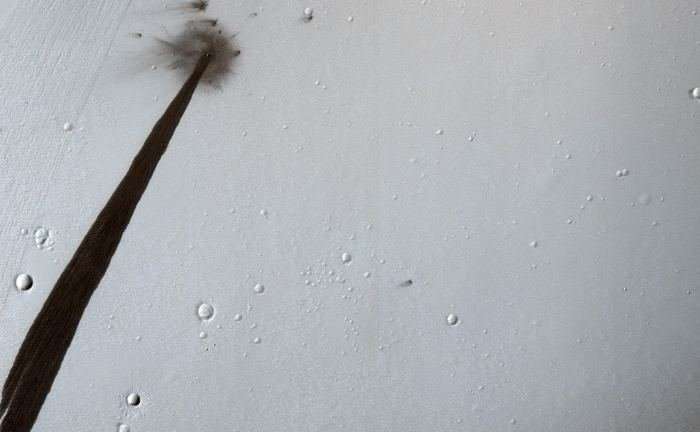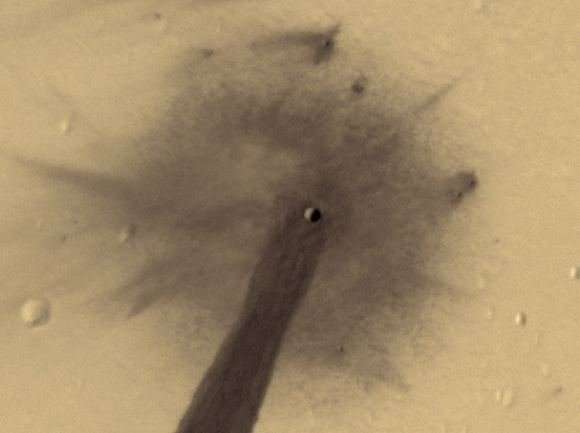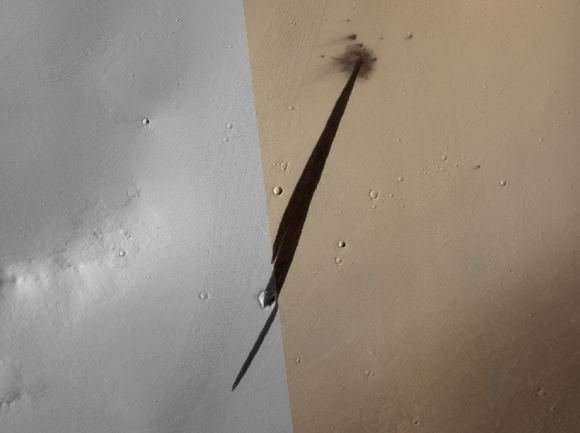A meteoroid smashed into the side of a crater on Mars and then started a landslide

In 2006, NASA's Mars Reconnaissance Orbiter (MRO) established orbit around the Red Planet. Using an advanced suite of scientific instruments – which include cameras, spectrometers, and radar – this spacecraft has been analyzing landforms, geology, minerals and ice on Mars for years and assisting with other missions. While the mission was only meant to last two years, the orbiter has remained in operation for the past twelve.
In that time, the MRO has acted as a relay for other missions to send information back to Earth and provided a wealth of information of its own on the Red Planet. Most recently, it captured an image of an impact crater that caused a landslide, which left a long, dark streak along the crater wall. Such streaks are created when dry dust collapses down the edge of a Martian hill, leaving behind dark swaths.
In this respect, these avalanches are not unlike Recurring Slope Lineae (RSL), where seasonal dark streaks appear along slopes during warmer days on Mars. These are believed to be caused by either salt water flows or dry dust grains falling naturally. In this case, however, the dry dust on the slope was destabilized by the meteor's impact, which exposed darker material beneath.
The impact that created the crater is believed to have happened about ten years ago. And while the crater itself (shown above) is only 5 meters (16.4 feet) across, the streak it resulted in is 1 kilometer (0.62 mi) long! The image also captured the faded scar of an old avalanche, which is visible to the side of the new dark streak.

The image was captured by the MRO's High Resolution Imaging Science Experiment (HiRISE), which is operated by researchers at the Planetary Image Research Laboratory (PIRL), part of the Lunar and Planetary Laboratory (LPL) at the University of Arizona, Tucson.
This is just the latest in a long-line of images and data packages sent back by the MRO. By providing daily reports on Mars' weather and surface conditions, and studying potential landing sites, the MRO also paves the way for future spacecraft and surface missions. In the future, the orbiter will serve as a highly capable relay satellite for missions like NASA's Mars 2020 rover, which will continue in the hunt for signs of past life on Mars.
At present, the MRO has enough propellant to keep functioning into the 2030s, and given its intrinsic value to the study of Mars, it is likely to remain in operation right up until it exhausts its fuel. Perhaps it will even be working when astronauts arrived on the Red Planet?

More information: www.uahirise.org/ESP_054066_1920
Source Universe Today





















